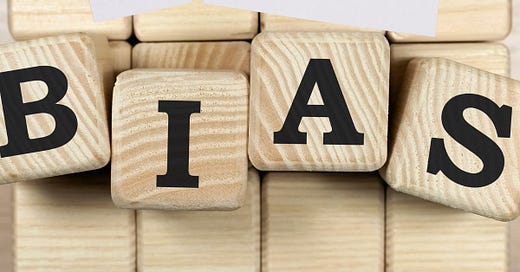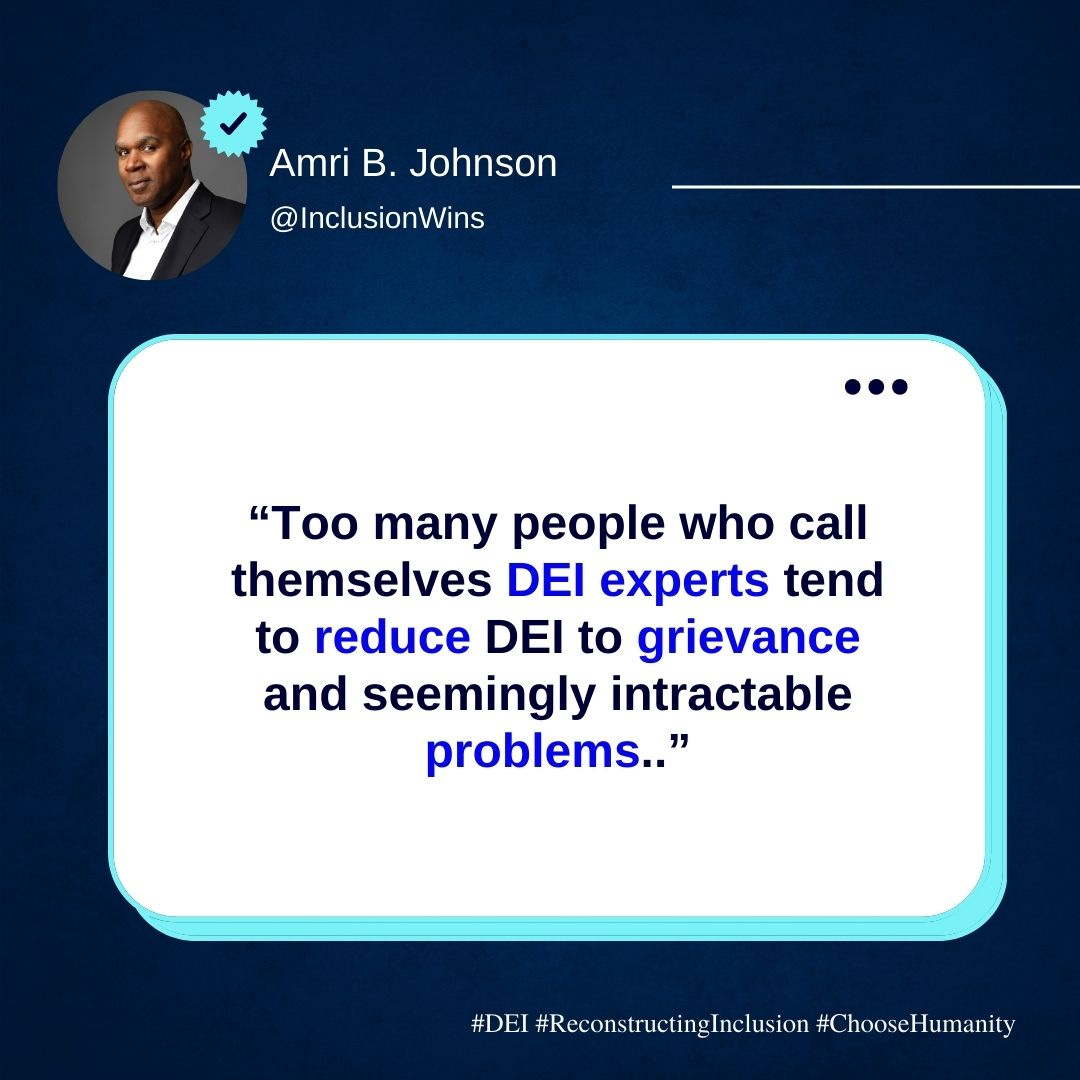Creating Dynamic Capabilities: Expanding Our DEI Toolkit
When you only have a few tools at your disposal, you tend to apply them universally, even when they are ineffective.
Recently (well, in the course of history), it's become evident that many initiatives within the diversity, equity, and inclusion (DEI) space are not achieving their intended goals. Not only are these efforts frequently ineffective, but we also have substantial evidence pointing to their shortcomings. Despite this, there is a persistent tendency to continue these practices without critically examining why they fail. Practitioners often dismiss or push back against even well-meaning critics (like me), even when those critics genuinely want to improve the outcomes of DEI initiatives.
This defensive stance is problematic. Instead of fostering an environment where people can share opposing views and thrive together, it creates an adversarial atmosphere.
I have often said that DEI practitioners need to be beacons for dissent.
Instead, many have been heat-seeking missiles looking to take out dissenters en masse and as rapidly as their pushback (in bad and good faith) emerges. This way of being, calling anything or anyone who doesn’t go along with an ideological stance masking as the practice of DEI, is not one that works nor does it serve the space we are committed to move forward.
DEI practitioners need to engage with evidence-based critiques and consider alternative approaches. For example, the focus on unconscious bias training is often questioned. Perhaps instead of emphasizing unconscious bias, we should broaden our focus to all biases, understanding that many are unconscious by nature.
Research shows that unconscious bias training and similar grievance-based training generally yield limited results (with a reference to Keir Starmer dismissing Black Lives Matter). However, there are approaches with proven effectiveness. The challenge is to combine successful strategies with new insights rather than dismiss them outright.
DEI practitioners must be beacons for dissent.
One reason for the resistance to change in DEI practices is the limited toolkit available to many practitioners. When you only have a few tools at your disposal, you tend to apply them universally, even when they are ineffective. If bias training is your primary tool, you will see every issue through that lens. Similarly, if your focus is on anti-racism, you might identify racism in every situation, sometimes to the point of seeing it where it may not exist.
A personal anecdote illustrates this point: Once while discussing anti-racism with a friend, we noted how easy it is to label situations as racist. For example, if I didn't receive my food quickly at a restaurant and noticed I was the only Black person there, it would be easy to jump to the conclusion that racism was at play. While I didn't voice that thought to the restaurant personnel, it highlights how readily we can interpret experiences through a single-identity-oriented (generally those that occur as most “marginalized”) lens, even when there might be other explanations.
This tendency to look for racism or bias everywhere is counterproductive. It's a kind of cognitive bias in itself, where our expectations shape our perceptions. This mindset can prevent us from addressing personal biases and reactions, perpetuating a cycle of seeing the world through a limited, often negative, perspective.
Another significant issue is that DEI practices often focus too narrowly, ignoring the broader context. This is sometimes done conveniently, but for the most part, I think it is myopia.
For example, racial issues can go beyond skin color. The stereotyping and negative associations between one's ethnicity and perceived characteristics while being predominantly associated with skin tone, can extend beyond what we look like, affecting how we interact with the world and how the world interacts with us. This complexity is often overlooked in favor of simpler, more direct approaches, which can lead to misunderstandings and ineffective solutions.
As a parent, I worry about my child's future in a society that still grapples with these issues. I hope he will have a perspective that doesn't always interpret the world through the lens of racism or bias. I want him to have the resilience to confront challenges without immediately attributing them to racial factors, even though he will likely experience racialization in the United States and where we live in Switzerland to an extent, but differently.
My son is what people call a cross-culture kid. He is distinguished from third culture kids since he was born in Swiss-German-speaking Switzerland to a Spanish mother who speaks about eight languages, all with a French accent. So, he is technically an American who is learning to speak four languages simultaneously and happens to have a skin tone, as I shared in Reconstructing Inclusion, "like an almond, with hues of Bronze, Desert Sand, and Gel Fx Rose (per Crayola™)” because of his father’s darker hue.
He will experience the world much differently than his African-American ancestors. Will he encounter people who are anchored positively or negatively on the trope of race? Of course.
Will the trope hold the same recurrent meaning to him? No. That’s because his mother, siblings, and maternal lineage have a different relationship with it. That is, until recently, there were no racialized family members. In that sense, I am the “pioneer” (as far as I know) on both sides of my wife’s family.
So, Kai Amri Johnson will know what race is, but I will be very clear with him about what it is and isn’t. My parents did not make those distinctions. The context didn’t necessitate and, in some ways, didn’t have space for it. We will, and we shall.
Kai will move through the world with a different set of tools. He will not be limited in the tools he can choose to navigate the world. He will know that if the tools he has at his disposal are insufficient, he will learn what other tools are needed, master them, and put them into his ever-expanding toolkit.
He won’t be in the position of too many DEI practitioners. He will not need to misapply tools by reducing problems to occur as a discrete set of familiar options.
To create lasting change, those committed to DEI professionally must expand our strategies, engage with critical feedback, and address our biases. One cannot go deeper in their work with people without digging more deeply into one’s own mind and heart.
We want to dismantle the structures of inequality and build a more inclusive, equitable society, but in too many cases believe that doing so is a matter of centering inequality based on a simplified set of variables. Simplified to the extent that one cannot see much beyond the trees that seem tallest at the forest’s edge.
Before I close, I have to mention a happening in the U.S. via the Society for Human Resource Management (SHRM). SHRM recently decided that they would: “We're going to lead with inclusion, because we need a world where inclusion is front and center. And that means inclusion for all, not some people. Everyone has a right to feel that they belong in the workplace and that they are included.” – Johnny C. Taylor, Jr., SHRM-SCP.
As you can imagine, those who think equity is the most important letter in the DEI trifecta (even though it is the one with the shortest tenure) are spending a lot of social media energy disparaging SHRM’s decision.
And, my conclusion, until I have more time to write extensively about what occurs as a short-termist reaction to me, is that believing the removal of a word makes an approach less successful doesn’t remember New Coke!
I hope this was helpful. . . Make it a great day! ✌🏿
In this episode of the ‘Reconstructing Inclusion’ podcast, I am joined by esteemed Philosophers, Dr. Subrena Smith and Dr. David Livingstone Smith, who offer profound insights into the complex dynamics of race and its impact on society. They highlighted that racialization is deeply ingrained in the ideological foundations of race, perpetuating systemic oppression and exploitation.








